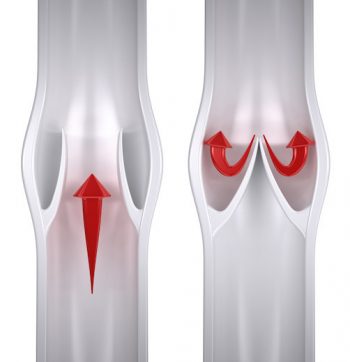9 Best Ways to
Get Your Lymph Moving
Naturally
1. Lymphatic Massage / Lymphatic Drainage Therapy
Lymphatic Drainage Therapy, or Manual Lymphatic Drainage (MLD) often referred to as “Lymphatic Massage” is one of the most effective ways to move your lymph.

Another very effective therapy is Electro-Lymphatic Therapy which is a gentle and painless therapy done with a machine. It has the advantage of making lymph less sticky so it can flow better. You can read about the difference between the two here.

Lymphatic Drainage Therapy helps not only to move lymph to reduce swelling, but it also helps keep our immune system in top notch shape, transports fat-soluble vitamins around the body, and helps our body rid itself of waste.
Pain & Swelling Solutions
offers both types of
Lymphatic Therapy.
2. Drink Plenty of Water
Hydration is everything when it comes to the lymphatic system.
Lymph is fluid and when we are dehydrated that fluid becomes sticky, sludgy, and doesn’t move.
The body requires water for many processes, so it “steals” it from places where water is abundant – like lymph. This leaves lymph thick and unmoving.

Since the lymphatic system is the main highway for the body to transport waste away from the cells, a lack of water leading to sludgy lymph means those toxins stay in place and build up.
Having a toxic body means that we are more at risk for developing disease.
Water consumption, therefore, is not only important for lymph movement but critical to overall health.
3. Move / Exercise
The lymphatic system does not have a large pump like our main circulatory system does with the heart.
Instead it relies primarily on movement of the body to propel lymph along the lymphatic vessels (similar to veins).

The pushing of the muscles against the skin as we contract them is how lymph is moved most effectively.
The pulse of blood through our arteries caused by the beating of our heart also helps move lymph. So, when you exercise and raise your heart rate, that helps to move lymph faster because the pulse rate increases.

Movement doesn’t have to be great to get results. Simple walking is quite effective. Naturally, the more vigorous the exercise, the more the lymph will flow. If walking is all you can do, know that you are still helping your lymph and improving your overall health.
Yoga is a great gentle exercise to help move lymph. This is because the skin stretching during yoga helps fluid located between the cells to get into the lymphatic system to be transported. Again, you don’t have to be doing hot yoga to get an effect. Slow and gentle yoga, or even yin or restorative yoga is beneficial.
Aren’t up to a yoga class? Go for a walk. Just do something that gets you moving – and do it regularly.
4. Rebounding
Don’t know what a rebounder is? You may have heard about it and wondered what in the heck it was. It’s just a little trampoline made for indoor home use.
A rebounder works by creating gentle jostling of the lymphatic fluid.
Remember that
movement moves lymph?
As lymph progresses along its pathway (up the arm, let’s say), it goes through little segmented chambers in the lymphatic vessels. Once it enters a chamber because something near it moved and forced it through, it can’t go back because valves close behind them.

The next movement causes the lymph to advance to the next chamber and so forth. Rebounding is an exceptionally good method for getting lymph to move.
In addition, if you are jumping you are increasing your heart rate and breathing. Deep breathing is also helpful in moving lymph.
Let Pain & Swelling Solutions Help You Feel Better
Book Your Lymphatic Massage Appointment Online Now
5. Breathe!
We may not think about it this way very often, but breathing is a type of movement in the body. And as we said earlier, movement moves lymph.
The inhalation pushes out against the chest wall and back helping to scoot the lymph in those areas along their respective paths.
Perhaps more importantly is what happens with the diaphragm. As we inhale our diaphragm moves down and on our exhale it moves upwards.

Passing through the diaphragm is a major lymphatic vessel approximately as big around as a drinking straw that drains the lower half of the body. It is called the thoracic duct. The action of inhaling and exhaling “milks” the thoracic duct, propelling lymph upwards toward the heart where it rejoins our bloodstream.
To maximize lymphatic drainage by breathing, take slow, deep belly breaths.
6. Cut Out the Sugar and Artificial Ingredients
Sugar has a very strong effect on the liver and can contribute to fatty liver disease.
When the liver is healthy it produces about half of the lymph in the body. A liver that is distressed or diseased produces more lymph to purge its toxins.

Increased lymphatic volume can overload the lymphatic system and affect the whole body. It can cause swelling in the abdomen, genitals, and legs.
Artificial colors and flavors are manufactured from petroleum and can cause many allergic and other immune reactive disorders. Additionally, they are carcinogenic (cancer-causing) and are banned in Europe.
They are a system irritant and tax the lymphatic system which is responsible for removing toxins from the body.
7. Reduce Your Stress

Lymph travels through vessels to get from one point to the next much like cars move down the highway. If a road deteriorates, cars have a hard time getting from A to B.
In that very same way, if the lymphatic system vessels are deteriorated, lymph can’t carry away wastes or allow the immune system to function properly because it needs the lymphatic system to get around.
8. Try Dry Brushing
Dry Brushing is a technique that helps you move your lymph.
The act of brushing the skin helps to stimulate the flow of lymph.
Making dry brushing a daily habit prior to showering or bathing will help keep your lymph system healthy. Always brush your arms and legs in the direction of your heart.
Caution for people with lymphedema: take great care not to cause scratches on your skin as this could lead to infection (cellulitis).
9. Do Yoga

You do not need to do hot yoga to experience movement of lymph, slow yoga, yin yoga, and restorative yoga also help.
Doing yoga also helps to relieve stress which also helps aid the lymphatic system by reducing cortisol levels.




